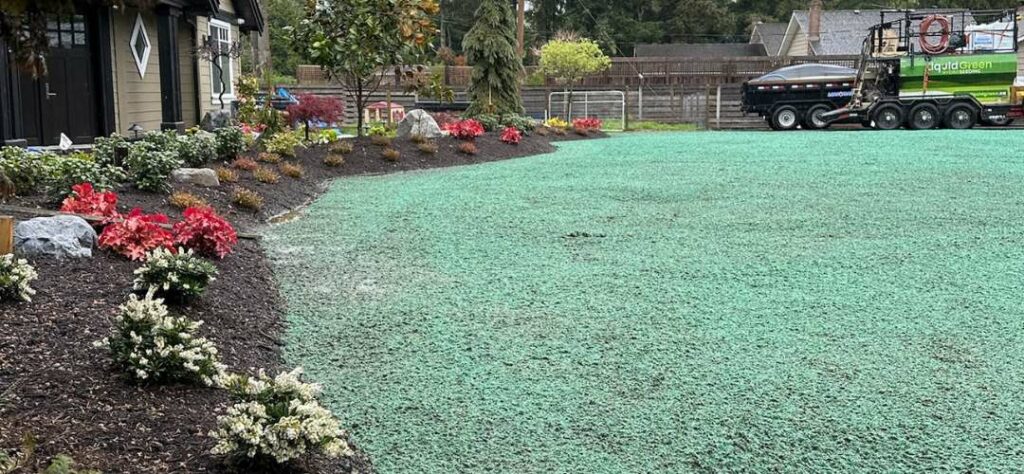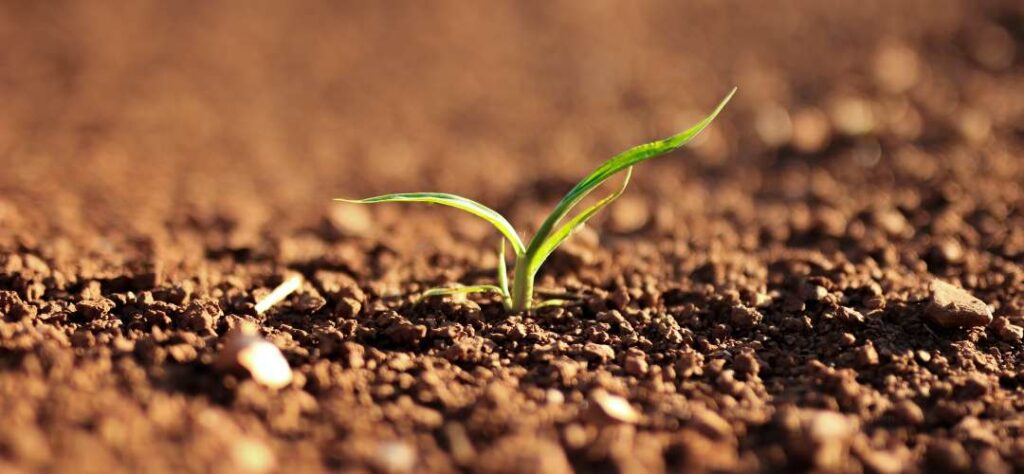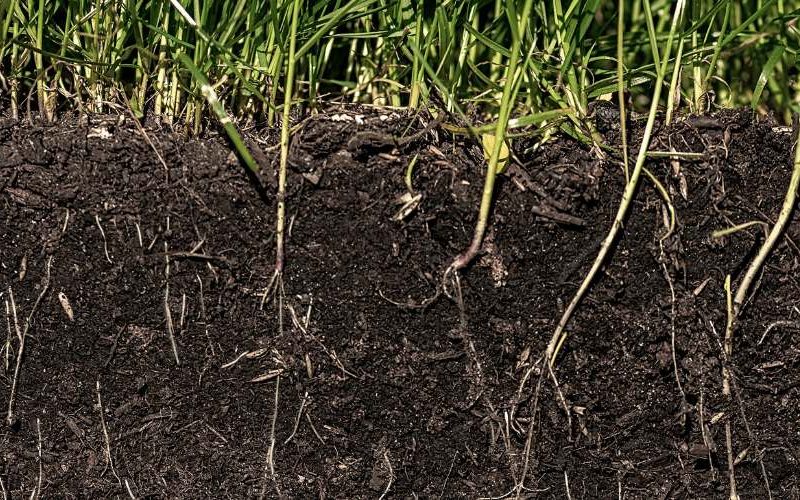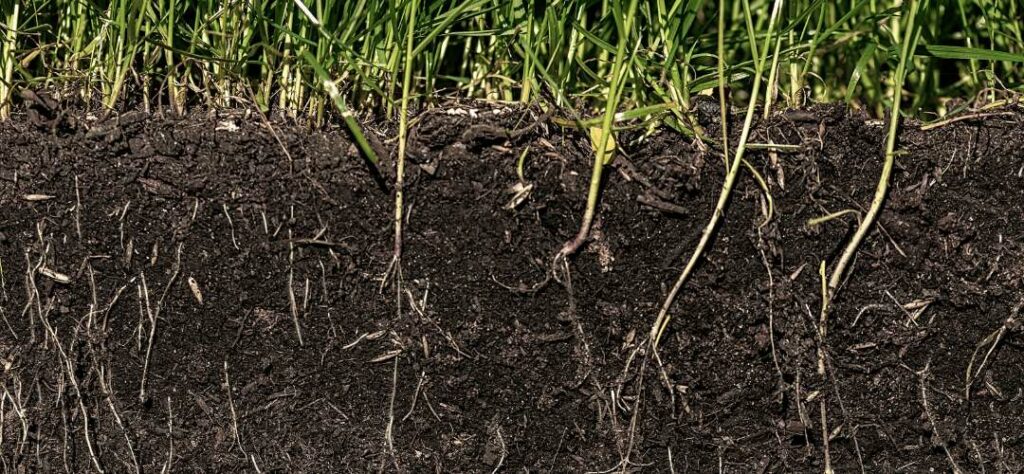How To Test Soil PH
When knowing how to test soil pH, it’s important to follow all steps. Maintaining optimal soil pH is pivotal in gardening and agriculture, profoundly impacting nutrient availability and plant vitality. The pH level dictates nutrient solubility, affecting plants’ ability to absorb vital elements. Precise pH assessment is imperative for thriving crops. Our forthcoming guide delves into diverse testing methods, elucidates factors influencing pH, and underscores its critical role in plant well-being. From testing methodologies to corrective measures, we cover all aspects. For comprehensive soil management solutions and hydroseeding expertise, Liquid Green stands out. Our team at Liquid Green can help you understand what is hydroseeding and why it revolutionizes landscaping and erosion control.
What Is Garden Soil pH?
Testing soil pH is a critical measure of acidity or alkalinity within the soil, playing a pivotal role in soil health and the availability of nutrients to plants. The pH scale, ranging from 0 to 14, serves as a yardstick for this measure, with 7 representing a neutral state. When the pH falls below 7, it signifies acidic soil, while values above 7 denote alkaline soil conditions. This balance is fundamental in creating an environment where plants can effectively absorb essential nutrients for their growth and development. Understanding and managing pH soil is fundamental for successful results.
Impact of Soil pH Levels on Soil Properties
Soil pH levels influence various soil properties and processes crucial for plant growth and soil health. Firstly, it governs nutrient availability by impacting the solubility of essential elements. In acidic soils, phosphorus, potassium, and calcium deficiencies may arise, while alkaline soils can limit micronutrient accessibility like iron, manganese, and zinc. Secondly, soil pH regulates microbial activity, shaping the diversity and functions of soil microorganisms essential for nutrient cycling and soil structure maintenance. Thirdly, it directly affects plant health and growth, as different plants exhibit specific pH preferences. Deviations from the ideal pH range can lead to nutrient deficiencies, stunted growth, and increased vulnerability to pests and diseases. For homeowners and business owners, managing soil pH levels and alkaline soil ph is very important for your hard work to pay off.
Importance of Soil pH Testing
To get the best results, optimizing soil ph levels and nutrient management is key. Tailoring fertilization practices and soil tests ensures optimal nutrient absorption by plants. Specific fertilizers or amendments can rectify imbalances, promoting plant health. Regular soil ph test is key to preempting nutrient imbalances, fostering healthier plants and higher yields. Selecting plants suited to specific pH conditions is essential, guiding choices for gardens or landscapes. Continuous monitoring of soil pH allows for timely adjustments, promoting soil health and fertility. It also evaluates the efficacy of soil management practices, fostering optimal conditions for plant growth. By testing soil, amd maintaining balanced soil acidity or alkalinity, gardeners and farmers can enhance soil fertility, structure, and biological activity, thereby ensuring sustained productivity and success in their endeavors.

How to Test pH in Soil: Exploring Soil pH Testing Methods
Learning how to test soil ph at home can be overwhelming and can lead to incorrect results. It’s important to follow the steps and understant pH. pH, a measure of hydrogen ion activity in an aqueous solution, can be assessed conveniently at home through the use of home testing kits. Understanding how to test ph of soil without a kit is important in order to use comprising test strips, testing solutions, or electronic meters, correctly. However, their accessibility and simplicity make them a popular choice, providing quick results within minutes. Moreover, a home soil test is budget-friendly compared to professional services, offering affordability without compromising accuracy. Soil pH meters, an alternative method for testing soil acidity or alkalinity, utilize electronic technology to provide precise measurements for testing your soil. Offering direct measurement without relying on chemical reactions, they ensure accuracy and reliability. These meters are versatile, suitable for various soil types and conditions. Some models even offer real-time monitoring capabilities, enabling users to track pH changes over time. Particularly suited for users seeking professional-grade results, soil pH meters are invaluable tools for maintaining optimal soil conditions and promoting successful gardening and agricultural practices.
How to Check Soil pH at Home
To ensure accurate soil pH assessment when testing your soil, follow these steps:
- Gather Materials: Acquire a DIY soil pH testing kit containing test strips, testing solutions, or electronic meters. Collect soil samples from various locations to represent the area accurately.
- Prepare Soil Samples: Use clean containers for soil samples and remove any debris or large particles to ensure purity. Perform the
- Test: Follow the kit instructions precisely for conducting the soil test. Mix soil samples with the testing solution provided or use the test strips/meters as directed.
- Wait for Results: Allow sufficient time for chemical reactions to occur or for electronic measurements to stabilize. Adhere to the kit guidelines for result interpretation.
- Interpret the Results: Compare color changes in the solution or readings from the meters with the provided pH chart. Take note of the pH level and any recommendations provided by the kit. Take Action: If necessary, adjust the soil pH using appropriate soil amendments based on the test results.
- Monitor and Retest: Keep track of pH levels over time and periodically retest the soil to observe any trends or changes, ensuring optimal soil conditions for amazing plant growth.
Professional Soil PH Testing Services
If you’re trying to find the best option for how to test pH of soil, often a professional analysis is the best option. Soil analysis encompasses a comprehensive examination of soil properties, such as pH, nutrient content, organic matter, and texture. Employing state-of-the-art equipment and standardized techniques ensures accurate results. This process offers not just raw data but also interprets findings, providing tailored recommendations for effective soil management practices. To ensure representativeness, guidelines for collecting soil samples are provided. While soil analysis may involve higher costs, the insights gained and recommendations offered are invaluable for optimizing soil health and productivity. The turnaround time for results varies depending on the service provider’s workload. However, accessibility is widespread, with agricultural extension offices, laboratories, and private companies offering these services. Beyond a basic analysis, soil testing guides the formulation and execution of soil management plans, facilitating sustainable land use practices and environmental direction. By leveraging soil analysis, home owners and business owners can make informed decisions to enhance their landscaping while conserving natural resources for years to come!

When to Test Soil pH
Timing is very important when it comes to soil pH testing.
Testing soil pH at the right time is very important for accurate results and effective soil management, ensuring great growing conditions for plants and grass.
Before Planting: Assess soil pH before planting new crops, flowers, or trees to establish an ideal environment from the outset.
At Regular Intervals: Monitor soil pH regularly throughout the growing season, typically every 1-2 years for established gardens. For high-value crops or sensitive plants, more frequent testing, even annually, is advisable. After
Significant Changes: Test soil pH following major management practice alterations or soil amendments, such as lime or sulfur applications, heavy fertilization, or compost additions. When
Troubleshooting: Check soil pH when plants display signs of nutrient deficiencies or poor growth, like yellowing leaves or stunted growth. In
Spring or Fall: Spring testing before planting allows for pH adjustments if needed, while fall testing provides time for adjustments to take effect before the next growing season.
During Dry Periods: Test soil pH during dry spells when soil moisture levels are consistent, as dry soil yields more accurate pH readings than wet conditions.
Across Different Areas: Assess soil pH in various garden or landscape sections, especially if soil conditions differ. Different plants have varied pH preferences, so testing multiple locations provides a comprehensive understanding of soil pH site-wide.
By adhering to these testing guidelines there is a greater chance of abundant growth for fruit, vegtables, grass and other plants.
Factors Affecting Soil pH
Soil Amendments
Soil amendments play a pivotal role in adjusting soil pH levels to create optimal growing conditions for plants. Common soil amendments include acidifying agents and alkaline additives: Acidifying Agents: Examples include elemental sulfur, aluminum sulfate, and ammonium-based fertilizers. These agents release hydrogen ions (H+) into the soil solution, increasing acidity and lowering soil pH. Alkaline Additives: Lime, primarily calcium carbonate, is a common alkaline additive used to raise soil pH. It neutralizes acidity by reacting with soil acidity to form water and carbon dioxide, thereby increasing soil pH. The impact of these amendments on pH levels is significant. Acidifying agents lower soil pH, creating an acidic environment suitable for acid-loving plants like azaleas and blueberries. Conversely, alkaline additives raise soil pH, reducing acidity to create conditions favorable for alkaline-tolerant plants such as lilacs and clematis.This is why soil tests are so important before investing in your lawn.
| Soil pH | Recommended Amendment | Application Rate | ||
| Below 6.0 | Lime (calcium carbonate or dolomitic lime) | 50-100 lbs per 1,000 sq. ft. | ||
| 6.0 – 6.5 | Lime (calcium carbonate or dolomitic lime) | 25-50 lbs per 1,000 sq. ft. | ||
| Above 7.5 | Sulfur or other acidifying amendments | 10-20 lbs per 1,000 sq. ft. | ||
Natural Influences
Soil pH is influenced by various natural factors and are a key factor for soil ph testing.
Climate: Precipitation patterns and temperature significantly impact soil pH. Regions with high rainfall often have acidic soils due to leaching of basic cations. Conversely, arid areas tend to have alkaline soils because of minimal leaching and salt accumulation.
Geological Factors: Geological formations shape soil pH by providing mineral substrates with diverse chemical compositions. Soils derived from limestone or calcium-rich parent materials typically exhibit alkaline characteristics, while those from granite or sandstone may be more acidic.
Microbial Activity: Soil microorganisms are pivotal in nutrient cycling and pH regulation. Some microbes produce organic acids, contributing to soil acidification, while others facilitate the formation of alkaline compounds, influencing soil pH levels. Understanding these natural factors is essential for effective soil management, garden soil ph and agricultural practices.
Tips for Soil pH Management
Adjusting Soil pH Levels
To tailor soil pH to plant needs, employ suitable soil amendments. Acidifying agents such as elemental sulfur or aluminum sulfate can lower pH in alkaline soils, while lime elevates pH in acidic soils. Adhere to recommended application rates, determined by soil test results, to prevent over-application and potential pH imbalances. Ensure thorough incorporation of amendments into the soil for even distribution and effective pH adjustment. Utilize tilling or mixing techniques to incorporate amendments to the appropriate depth, optimizing results for plant health and growth. These adjustments can be done witha DIY soil ph test, however it is recommended to use a professional soil ph test. Call us today to learn more about soil ph testing.
Maintaining Optimal pH Range
Regularly testing soil ideally every 1-2 years for established gardens or landscapes, to track changes over time and adapt management practices accordingly. Establish a target pH range tailored to the specific needs of the plants being cultivated, referencing their pH preferences to ensure optimal growth conditions. Consistently monitor soil pH throughout the growing season, maintaining it within the desired range to support healthy plant development and productivity. Adjust pH levels as necessary in response to seasonal variations and evolving nutrient requirements of the plants. This proactive approach to soil pH test fosters an environment conducive to robust plant growth and high yields.
Preventing pH Fluctuations
In addition to soil ph testing, ensure stable soil pH levels through strategic practices:
Mulching: Employ organic mulches like compost or straw to regulate soil moisture and deter pH shifts. These materials foster microbial activity and organic matter breakdown, influencing pH over time.
Water Management: Implement proper irrigation methods to prevent waterlogging or excessive dryness, both of which can prompt pH fluctuations. Consistent soil moisture fosters pH stability.
Avoid Over-fertilization: Reduce usage of high-ammonium or nitrate fertilizers to curb soil acidification. Opt for balanced fertilizers and adhere to recommended application rates to avert pH imbalances and maintain soil health while testing soil ph.

Tailoring Hydroseeding Solutions to Soil pH Needs
Hydroseeding offers tailored solutions for addressing soil pH imbalances identified through professional soil testing: Customized Seed Mixtures: Select plant species according to their pH preferences, ensuring diversity for optimal soil coverage. pH-Adjusting Amendments: Integrate lime to elevate pH in acidic soils and sulfur to lower pH in alkaline soils directly into the hydroseeding slurry.
Targeted Fertilization: Adjust fertilizer components to meet soil pH requirements, ensuring essential nutrients are readily available to plants while considering pH-influenced nutrient availability. Long-Term Soil Health Management: Foster diverse vegetation cover, contributing organic matter and microbial activity to the soil, and stabilizing pH levels over time through vegetation growth.
These tailored approaches ensure effective pH management and promote sustainable soil health for long-term vegetation success. Hydroseeding services can include soil ammendemt to help you accelerate grass goals. Our Liquid Green team can ensure that the soil ph level is correct for the project, all while helping you stay within budget.
Final Words
Soil pH levels profoundly impact spray on grass seed plant growth and nutrient accessibility, influenced by diverse factors. Regular pH testing ensures ideal conditions, averting nutrient imbalances and fostering plant health. Find the best solution for how to test for ph in soil before starting your hydroseeding journey. Test soil pH before planting and consider professional testing, like that offered by Liquid Green, for precise results. Implement recommendations derived from testing to enhance soil and plant vitality, ensuring sustained productivity and success in gardening, agriculture or lawn growth endeavors. Our team can answer any questions you have on soil testing!


